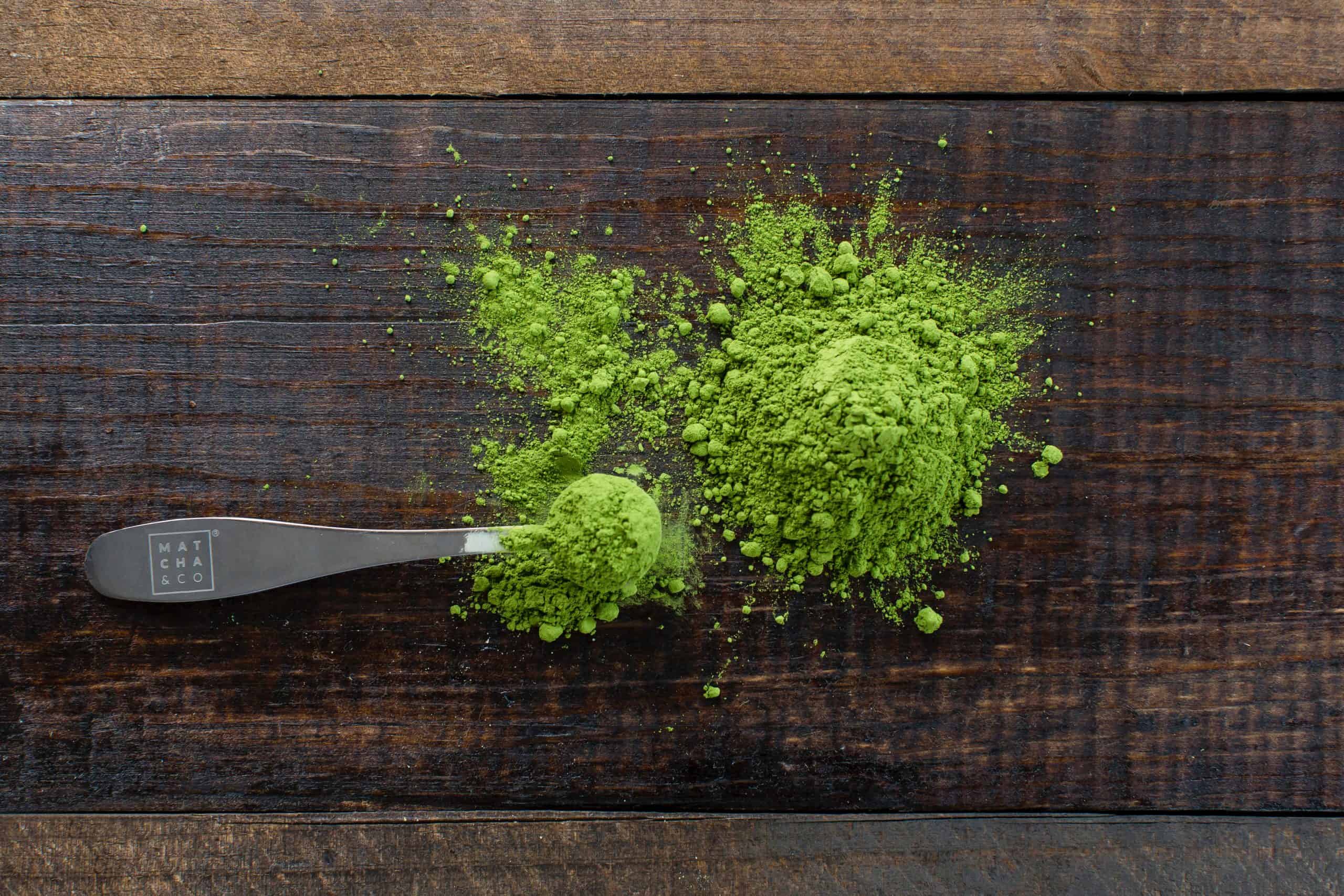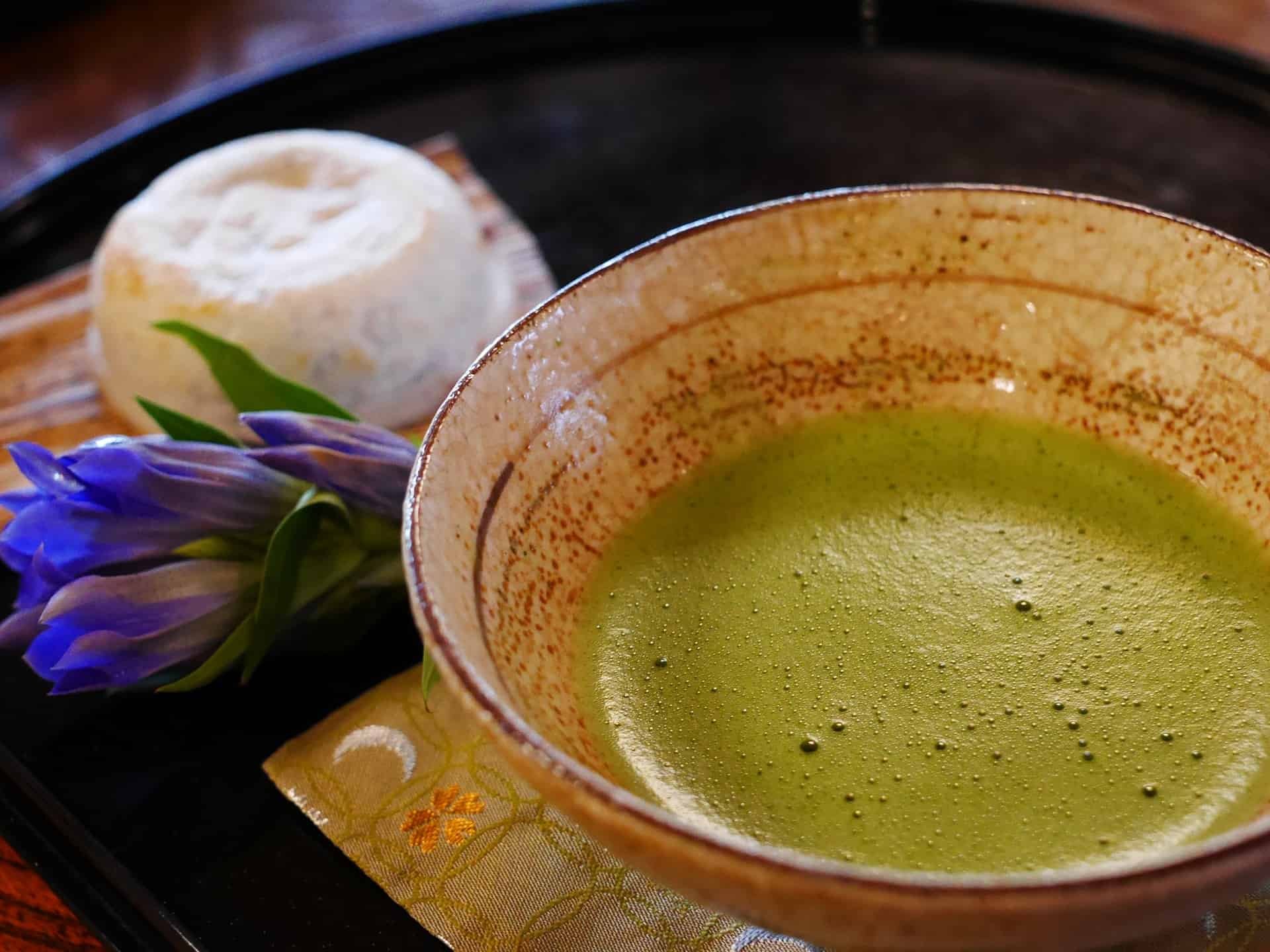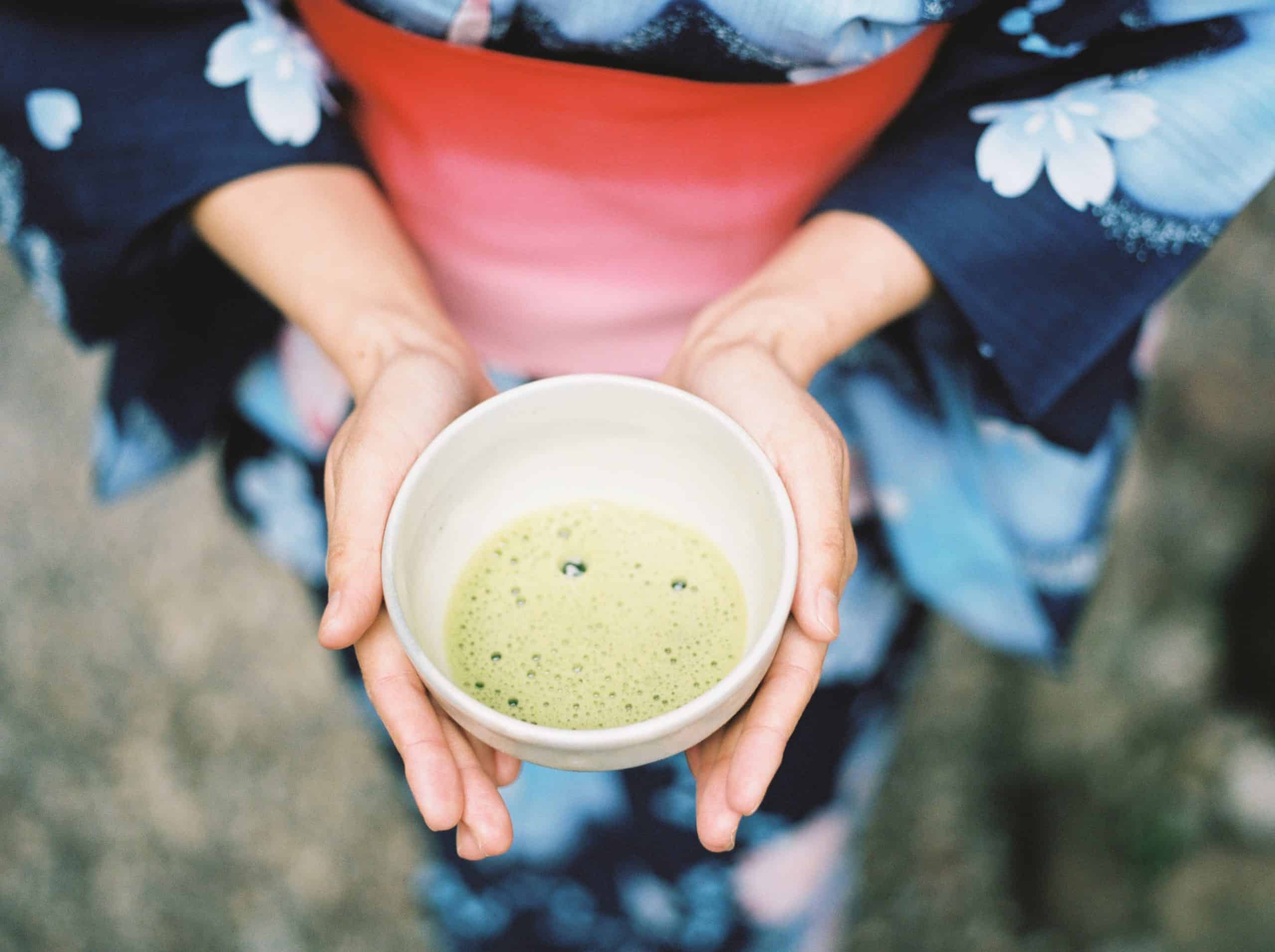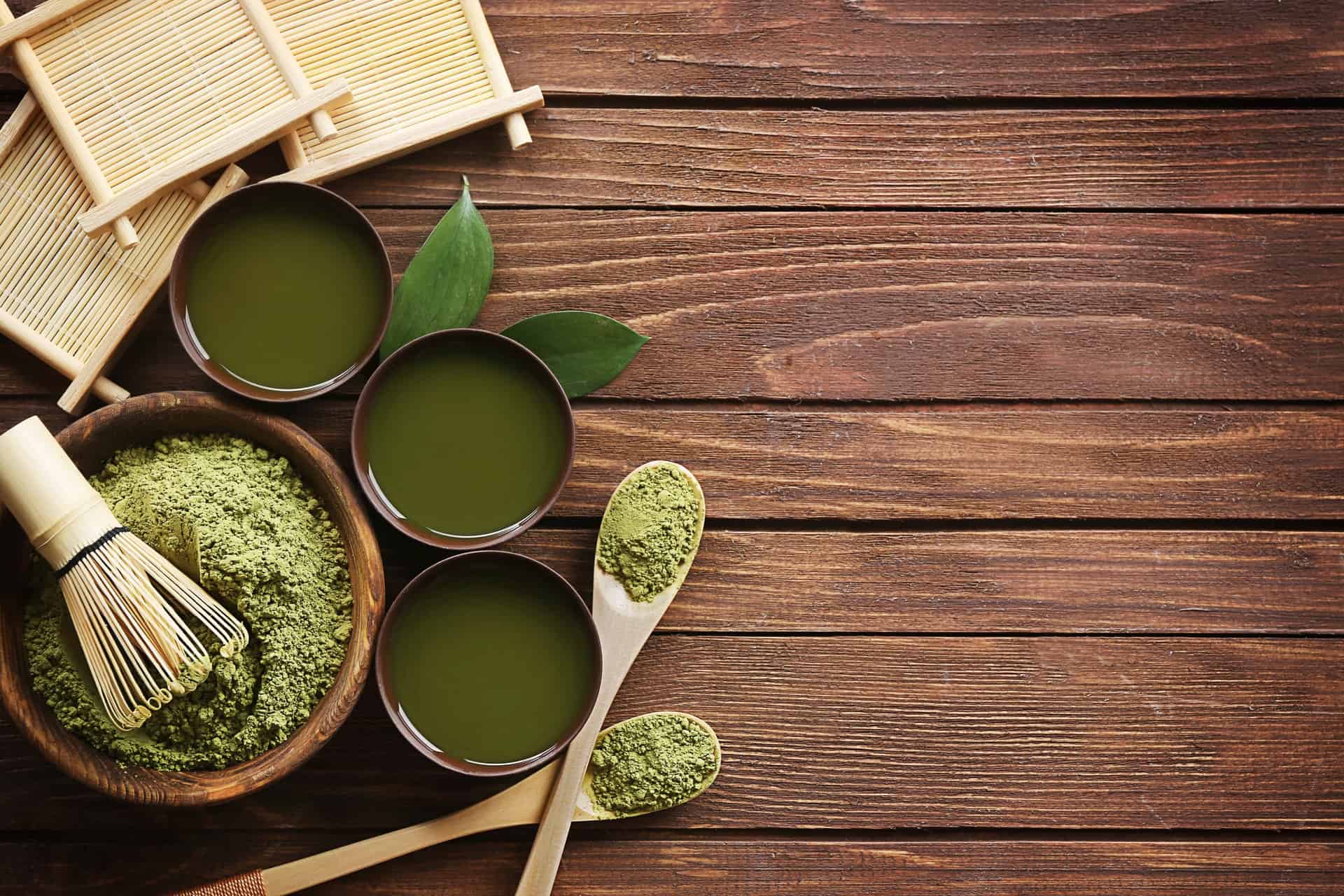What’s the matcha with you? Ha, okay Let me be serious. Most of us know about that frothy vivid green drink named matcha, right. But do we know about matcha history? What tea leaves are used? How is it processed? Where is the best place to purchase matcha and why do we need that little bit of candy before we drink it? Let’s learn about the History of Matcha!
The origins of Matcha began in China and ended in Japan. The preparation of matcha is history, preparation, and solemn meditation.

Matcha history
“Elixir of the immortals”
…Eisai
Researching about the history of matcha was like walking through an ancestry of who’s who of matcha. Starting from the Tang dynasty and ending into your teacup, whisked and frothy. The meaning of matcha: rubbed or ground tea. Ma means to rub or be ground, cha means tea.
Matcha starts out like any other tea. A seed. That seed becomes planted and grown. One difference is that while growing there is a time that these trees are shaded. That shading is what separates tea from matcha. The shading brings out the chlorophyll (color) and that distinct matcha flavor. The flavor from the tencha leaves that make it indescribable matcha.
It took a zen monk named Eisai bringing seeds from a trip he took to China. Eisai had spent some time studying in China. He also learned how to create tea in the powdered Chinese way. Eisai brought those seeds back home to Japan. That was around the 12th century.
Yet unknown to Eisai, between the 8th and 9th centuries (Tang Dynasty) two Buddhist monks named Saicho and Kukai had done the same thing.
Powdered tea did not make its presence until a later century. Prior to powdered tea, tea was compressed into cakes or rectangular forms. Tea leaves were heated, roasted, and pressed into these cakes to make it easier to travel and trade.
Powdered tea was first used by Chinese monasteries. It is so acclaimed because of its healing properties. Even when powdered tea went out of popularity matcha was still considered an elite drink.
There is another player in the tea world, Myoe. Myoe tended to the tea plantation with seriousness and encouraged by Eisai. This first plantation was located on the temple grounds.
Myoe realized the best time for the tea plants to be harvested was early morning. This was when the dew was forming on the leaves. This was the best time. Of course the tea was powdered and used exclusively amongst the monks and military elite. The powdered tea was a luxury and only created in small amounts.
Powdered tea was considered a standard in tea and reserved only for the higher classes.
This tea first started in a tiny tea bush located in Kyoto, Uji. As the popularity of tea from the tea bushes expanded to areas of Yoshimitsu. Tea from Uji was not as popular and not considered as nice of a tea. This was because the tea would not grow as well under the shady tree conditions. Instead of destroying the trees or relocating they built wooden structures. This would allow the people to control what and when the sunlight would reach the tea bushes.
Today, about 2 weeks before harvest the structures are built around the tea plants. The tea plants are shaded, leaving them in the dark. This produces sweeter and brighter leaves. The tea leaves are plucked, steamed, and dried in an oven for about 20 minutes. The stems, twigs, and other unnecessary parts sorted out and the leaves ground into powder.
The leaves are handpicked, steamed, dried. The leaves are then cleaned free of all the stems and veins. This leaves just the leaf. Once the cultivation and processing are finished the leaves are ground into a fine powder. This is normally done with a mortar and pestle or even a stone wheel. Of course, modern times have brought moderation, and machines are used to speed up the process.
This tea is called Tencha. Tencha became the first tea, a shaded tea used in matcha making. The Tencha powder was then claimed to have exceeding health benefits.
Matcha originated in Japan, however, China shortly thereafter started to produce their own. The Chinese version could not hold a candle to the Japanese matcha.

What makes matcha green?
Matcha is created from tea leaves. The same tea leaves you use to brew your teas. The same bush that all teas come from, the Camellia sinensis.
The name matcha means “powdered tea”.
The leaves are dried and ground into a very fine powder (matcha).
When you go to purchase your matcha look for the vibrant green color. That will yield the best tasting product.
The matcha develops that green color from chlorophyll. Chlorophyll is overproduced by the plant because of the way it is shaded and grown.
Lower-grade matcha will be a yellowish-brown. This is a lower grade yet still enjoyable matcha.
There are two grades of matcha
Ceremonial
- Highest quality
- Bright green
Culinary
- Lower-grade by still enjoyable
- Yellow/brown
A fun way to test your matcha. Grab some and wipe it onto a piece of white paper.
You can also tell about the quality of the matcha by the way it feels. Matcha should feel smooth like an eye shadow or baby powder.

The distinct flavor of matcha
Matcha has a distinct, somewhat acquired taste that is influenced by the amino acids. It can be bitter and vegetal. Matcha also has a smooth buttery feel.
Most people have tasted matcha from the Culinary grade. The culinary grade will not produce the best-tasting matcha. When purchasing matcha make sure to look for the ceremonial grade or high-quality matcha.
The ceremonial matcha will give you a flowing, well rounded, and sweeter tasting matcha. That is the experience you want to go for.
Matcha gets its distinct flavor from the chlorophyll and amino acids that develop while the Camellia Sinensis grows. Matcha is a full-bodied beverage with a range of tastes from astringent, vegetal to sweet.
Last year I was privileged to attend a Japanese tea ceremony. Each of us was given a piece of very sweet candy to eat prior to drinking the matcha. This helps with the bitter taste and makes the matcha more palatable.
Matcha is now more than a beverage. The powdered matcha is showing up in other drinks as well as baked goods. I’ve personally tested some cookies from BIMI BAKERY. That was very good.
https://www.bimibakery.com
I’ve seen recipes for donuts, cakes, ice cream, smoothies, pastries, and lava cakes with matcha flowing from the inside.
Matcha is diverse. No longer just a Tang Dynasty drink but a 21st century powdered culinary ingredient.
One of the most beneficial properties of matcha is its meditative properties. Buddhist monks to warriors proclaimed the meditation benefits. Helping them to stay focused and alert, yet calm and peaceful.
Health benefits of matcha
One cup matcha is like taking in 10 cups of steeped tea when looking at antioxidant strength. Matcha also contains powerful EGCG.
Some of the benefits include:
- Increased metabolism
- Natural detoxifier
- Calms the mind (and soul)
- Rich in fiber
- Suppress hunger
- Reduces depression
- Lowers cholesterol
- Lowers blood sugar
- Contains L-theanine (amino acid)
- Provides a calm energy
- Helps you concentrate
- Healthy acid helps your teeth
- Contains chlorophyll
- Helps cognitive performance
- Helps calm inflammation
- Contains these vitamins
- Selenium
- Chromium
- Zinc
- Magnesium
While this is mentioned often I want to address the weight-loss issue. Green tea, Matcha will not help you lose weight. What it does is boosts your metabolism. It gets things going. Matcha is healthy and good for you. But it is not a quick lose weight drink or pill.
If you want to lose weight it’s relatively a science. Put out more energy then you put into yourself. Exercise more and eat less and definitely cut out carbs and sugar. That alone you will see a major difference.
For me, I feel like it degrades the healthy benefits of matcha to say it’s a weight loss product. It’s so much more than that.

How to brew matcha
It is suggested to use 150- to 175-degree water for the best results. Blending the powder with the liquid using a whisk. The ratio of matcha to water is up to the drinker—more matcha results in a thicker, frothier tea.
The Japanese tea ceremony
Zen Master Sen-no-Rikyu is largely credited with popularizing Juko’s tea ceremony ritual. He has become the most well-known and revered historical figure of the Japanese Tea Ceremony.
Sen-no-Rikyu formed the four basic principles of the Japanese Tea Ceremony:
Harmony (wa)
Respect (kei)
Purity (sei)
Tranquility (jaku)
The Japanese Tea Ceremony is called “Chado” or “Sado.” Translated, this means “The Way of Tea.”
The items you need for the Japanese Tea Ceremony are:
Chawan – Tea bowl
- Shallow for summer
- Deep for winter
Kensui – Waste bowl
Mizusahi – Freshwater holder or kettle
Chashaku – whisk
Futa-Oki – Kettle lid rest
Hishaku – Bamboo ladle
Natsume – Container that holds the matcha
Kama – Iron kettle for heated water
And we cannot forget
Wagashi -Sweet treat made of rice flour, sugar and adzuki bean paste
Watch this beautiful video demonstrating a Japanese tea ceremony. Realize each step has been passed down through time keeping the history of matcha alive.
Below is an explanation of the instruments and items used in the matcha ceremony video above.
- A square silk cloth to clean and purify the tools
- The cloth is folded and held by two diagonal corners and a fold is made 1/3 of the way down from the longest edge
- Opposites are folded then again in half
- Those edges are then folded again in half
- The host cleans everything in front of the guest
- Hot water poured into the bowl with the ladle
- The Matcha Whisk (Chasen) is inspected for any damage
- The Chasen is then used to whisk the water, to clean the chasen and warm it up
- The water is used to warm up the bowl then poured out
- Matcha is added to the bowl
- Again hot water is added to the bowl with the ladle
- The whisk is again used to stir up the matcha to a foamy top
- The bowl is then presented to the guest with the designed side facing the guest.
- The guest then enjoys the matcha in three sips
- Slurping is considered a sign of enjoying the matcha
- The guest then hands the bowl back to the host.
Now watch the video again and see if you can identify each of the steps.
Summary
The history of matcha gives you everything you need to know about matcha. Now all you need to do is try it. Think about the honor of being able to taste a drink once reserved for only the elite, warriors, and monks. Matcha is as deep in history as it is health benefits.
When you get the opportunity, attend a Japanese tea ceremony. It’s so peaceful and meaningful. Oh and the Wagashi, enjoy that as well. It gives matcha a whole different experience.

